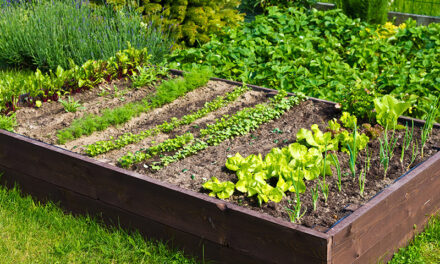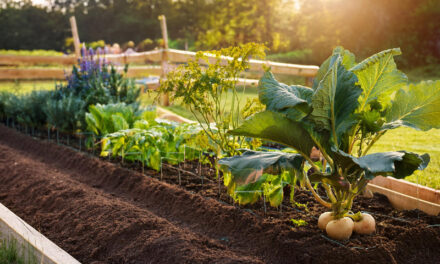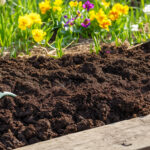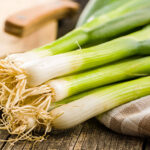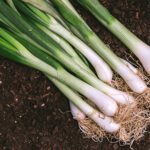Raised bed gardening is a game-changer for growing fresh, healthy vegetables. With their controlled environment and versatility, raised beds offer a practical solution for gardeners of all skill levels. In this guide, we’ll cover everything you need to know about creating and maintaining a vegetable garden bed, including design tips, planting strategies, and the best crops to grow.
Why choose a vegetable garden raised bed?
A raised bed offers numerous advantages, including better soil control, improved drainage, and easier maintenance. It’s particularly useful for areas with poor soil, limited space, or challenging climates. Raised beds also reduce the need for bending, making gardening more accessible to people with mobility issues.
Benefits of raised bed vegetable gardening
1. Improved soil quality
You have full control over the soil mix in a raised bed, ensuring the ideal conditions for vegetable growth. This is especially helpful in regions with clay or sandy soil.
2. Better drainage
Raised beds prevent waterlogging by allowing excess water to drain away easily, reducing the risk of root rot.
3. Space efficiency
Raised beds allow for intensive planting techniques, producing higher yields in smaller spaces.
4. Pest and weed control
The elevated structure makes it harder for pests like slugs to reach your plants. Adding barriers or covers can provide extra protection.
5. Extended growing season
The soil in raised beds warms up faster in the spring, allowing for earlier planting and extended harvests.
How to set up a vegetable garden bed
1. Choose the right location
- Pick a spot with 6–8 hours of sunlight daily.
- Ensure proximity to a water source for easy irrigation.
2. Decide on bed dimensions
- Width: Keep it no wider than 4 feet for easy access from both sides.
- Length: Customizable based on space, but 6–8 feet is common.
- Height: 12–18 inches is ideal for most vegetables.
3. Select materials
- Wood: Cedar or redwood is naturally rot-resistant and eco-friendly.
- Metal: Durable and long-lasting, though it may heat up in direct sunlight.
- Plastic or composite: Lightweight and weather-resistant, ideal for portability.
Soil preparation for a vegetable garden bed
1. Use a quality soil mix
Combine equal parts of:
- Compost for nutrients.
- Peat moss or coconut coir for moisture retention.
- Perlite or coarse sand for aeration and drainage.
2. Add organic matter
Enrich the soil with well-rotted manure or organic compost to maintain fertility.
3. Test the pH
Vegetables grow best in soil with a pH of 6.0–7.0. Adjust acidity using lime (to increase pH) or sulfur (to decrease pH) if necessary.
Best vegetables for a vegetable garden bed
1. Leafy greens
Lettuce, spinach, and kale grow quickly and require minimal space.
2. Root crops
Carrots, radishes, and beets thrive in loose soil and are perfect for raised beds.
3. Tomatoes and peppers
These sun-loving plants perform exceptionally well in raised beds with proper staking.
4. Beans and peas
Bush and pole varieties grow well with vertical support and offer high yields.
5. Zucchini and cucumbers
Squash plants benefit from the good drainage of raised beds. Use trellises for vertical growth.
Watering and irrigation tips
1. Water deeply and consistently
- Aim for about 1 inch of water per week, adjusting for weather conditions.
- Water early in the morning to reduce evaporation and fungal risks.
2. Install a drip irrigation system
A drip system ensures even watering, conserves water, and reduces labor.
3. Use mulch
Apply a 2–3 inch layer of organic mulch (like straw or wood chips) to retain soil moisture and prevent weed growth.
Companion planting for raised beds
Companion planting helps optimize space, deter pests, and improve yields. Here are some great combinations:
- Tomatoes and basil: Basil repels pests and enhances tomato flavor.
- Carrots and onions: Onions deter carrot flies.
- Beans and corn: Corn provides natural support for climbing beans.
Seasonal planting guide
Plan your vegetable garden bed according to the growing season:
Spring planting
- Start with cool-season crops like lettuce, spinach, and peas.
Summer planting
- Transition to heat-tolerant vegetables such as tomatoes, peppers, and zucchini.
Fall planting
- Grow hardy greens like kale and root crops like carrots for late-season harvests.
Tips for maintaining a vegetable garden raised bed
1. Regular weeding
Remove weeds promptly to prevent competition for nutrients.
2. Rotate crops
Change the location of crop types each season to prevent soil depletion and reduce pest buildup.
3. Replenish soil nutrients
Add compost or organic fertilizers at the start of each growing season.
4. Inspect for pests
Check plants regularly for signs of pests or disease, and address issues early.
FAQs about vegetable garden beds
1. What’s the ideal size for a vegetable garden bed?
A 4×8-foot bed is a common choice, but it can vary based on available space.
2. Can I place a raised bed on concrete?
Yes, but ensure proper drainage by adding a layer of gravel and a weed barrier before filling it with soil.
3. How often should I water my vegetable garden raised bed?
Water deeply 1–2 times a week, depending on weather and soil type.
4. Do I need to line my raised bed?
Lining is optional but can help prevent weeds and protect wooden beds from moisture.
5. What vegetables grow best in shallow raised beds?
Leafy greens, radishes, and herbs thrive in beds as shallow as 6–8 inches.
6. How can I protect my vegetable garden bed from pests?
Use row covers, netting, or companion planting to deter pests naturally.
Conclusion
A vegetable garden raised bed offers a productive and manageable way to grow fresh produce in any setting. With thoughtful planning, the right materials, and consistent care, your garden can provide bountiful harvests season after season. Whether you’re a seasoned gardener or just starting out, raised beds are a versatile and rewarding option for cultivating vegetables.


